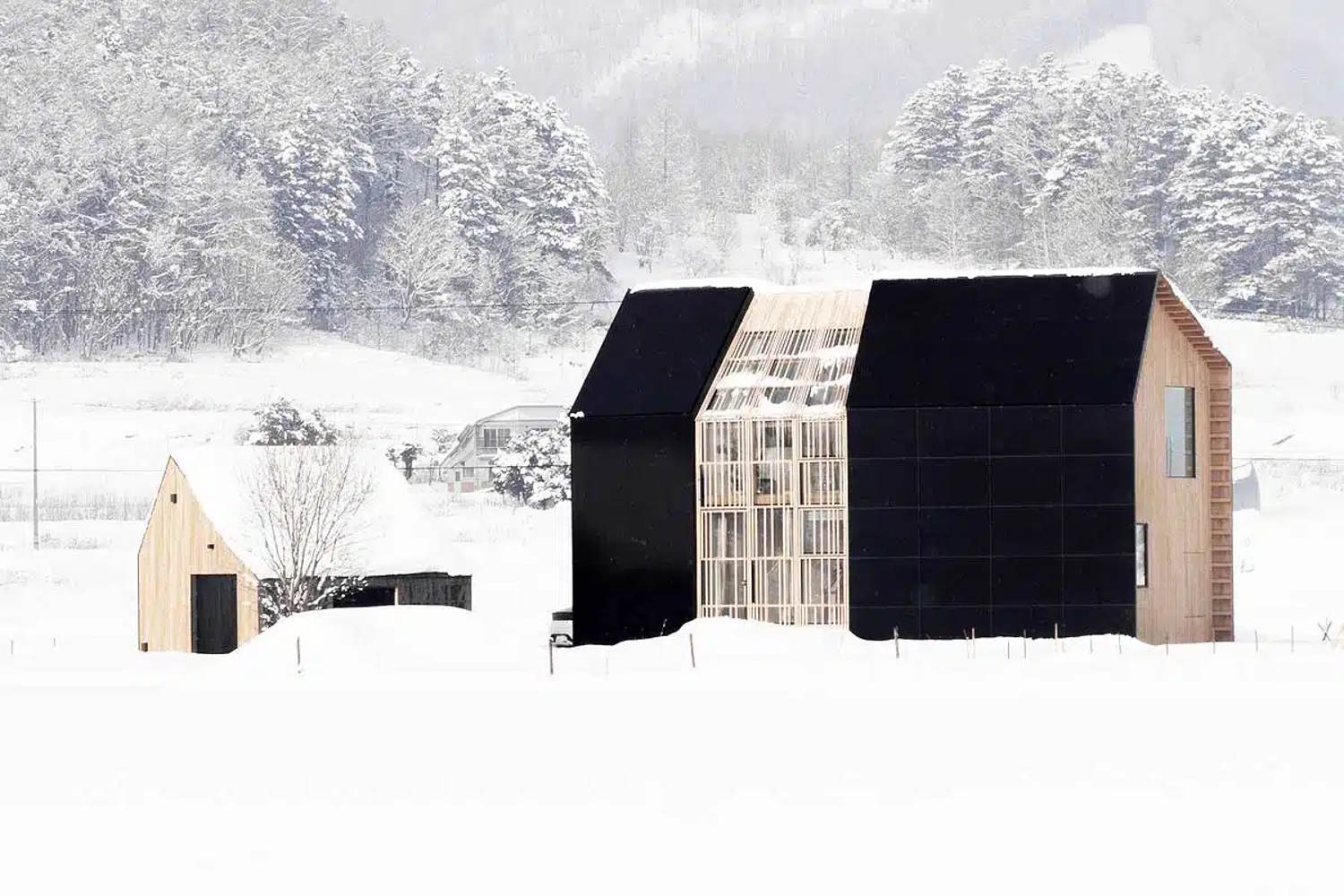The house of the future is called House W and was designed by a Japanese architectural studio to be economical, quick to build and ecological, in the heart of the snowy landscapes of Hokkaido

@Florian Busch Architects
Modular, passive, zero-impact, and built into the landscape—it is House W, created by the Florian Busch Architects agency. The house of the future generates nearly twice as much energy as it consumes.
We are on the western edge of Hokkaido’s Furano Plateau, an area with severe snowy winters and benign summers. The goal for the team was to create a building that was self-sufficient of the local power grid, having a net-zero energy consumption.
Mission accomplished. It started off with a Tokyo family of three wanting an independent home, far from the city crowds of the capital. They chose a field in Nakafurano, and instead of making a boxy, introverted structure, the architects decided to take the building apart and use natural materials to the fullest advantage.
Florian Busch Architects' House W integrates renewable energy solutions. https://link.ie.social/Bg5OIb
Posted by Interesting Engineering on Thursday, February 27, 2025
A house is a plant to live with
The architects at Florian Busch rebuke Le Corbusier’s 1923 definition of a house as a “machine for living,” and instead suggest that “a house is a plant to live with.” Following the principle of how plants function, House W siphons warmth from the ground with a geothermal pump and converts sunlight into electricity with a “solar skin.” The topography of the site also is ideal for harvesting solar power. In addition, it utilizes a natural water source to power its hot water and heating.
Similar to all passive and modular houses, House W utilizes the crisp elegance of a classic barn with an added contemporary flair. The original volume was divided into two blocks that are planned to be placed in a way to provide stunning views of the Tokachi Mountains and the hills around. This “division” is not random but maximizes air circulation and naturally controls the interior temperature.
Designed for all seasons
In summer, adjustable shutters keep out the sun and heat, and in winter, they allow as much heat as they can in. And since the family plans to expand their living area, the modular design of the house makes future expansion a snap.
Apart from its intelligent design, House W also shows that our homes can be friends rather than enemies—not just for our bills but for the planet as well.
